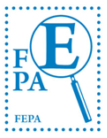Long-Lost Letters Bring Word, at Last
From The New York Times, 9 March 2023. Bryn Stole reported from London, Berlin and Oldenburg, Germany.
In a love letter from 1745 decorated with a doodle of a heart shot through with arrows, María Clara de Aialde wrote to her husband, Sebastian, a Spanish sailor working in the colonial trade with Venezuela, that she could “no longer wait” to be with him.
Later that same year, an amorous French seaman who signed his name M. Lefevre wrote from a French warship to a certain Marie-Anne Hoteé back in Brest: “Like a gunner sets fire to his cannon, I want to set fire to your powder.”
Fifty years later, a missionary in Suriname named Lene Wied, in a lonely letter back to Germany, complained that war on the high seas had choked off any news from home: “Two ships which have been taken by the French probably carried letters addressed to me.”
None of those lines ever reached their intended recipients. British warships instead snatched those letters, and scores more, from aboard merchant ships during wars from the 1650s to the early 19th century.
While the ships’ cargoes — sugar from the Caribbean, tobacco from Virginia, ivory from Guinea, enslaved people bound for the Americas — became war plunder, the papers were bundled off to so called “prize courts” in London as potential legal proof that the seizures were legitimate spoils of war.
For centuries since, the bulging boxes of those undelivered letters, seized from around 35,000 ships, sat neglected in British government storage, a kind of half-forgotten dead letter office for intercepted mail.
Poorly sorted and only vaguely cataloged, the Prize Papers, as they became known, have now begun revealing lost treasures. Archivists at Britain’s National Archives and a research team at the Carl von Ossietzky University of Oldenburg in Germany are working on a joint project to sort, catalog and digitize the collection, which gives a nuanced portrait of private lives, international commerce and state power in an age of rising empires.
The project, expected to last two decades, aims to make the collection of more than 160,000 letters and hundreds of thousands of other documents, written in at least 19 languages, freely available and easily searchable online.
Read the rest of the story here: https://www.nytimes.com/2023/03/09/arts/prize-papers.html
[photo credit: Tom Jamieson for The New York Times]



